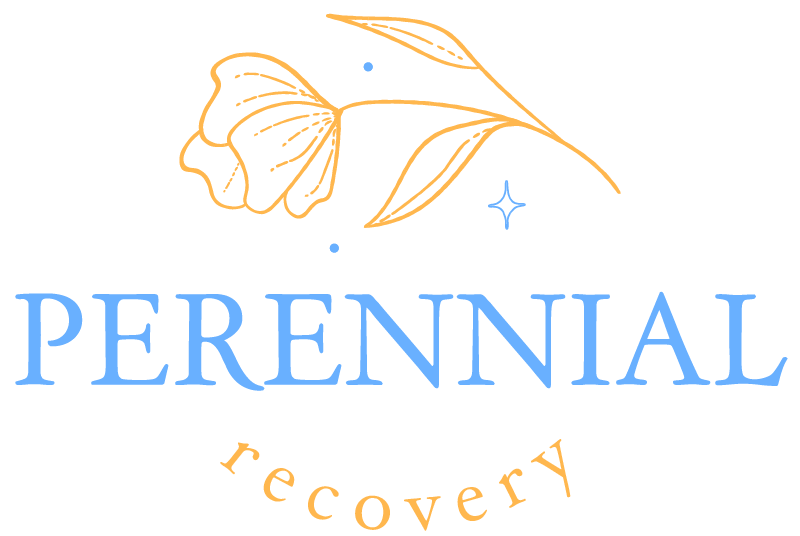Chronic Pain: A Complex Issue
When delving into the realm of chronic pain, it becomes evident that it is a multifaceted and intricate problem that affects individuals in various ways. To appropriately address chronic pain, it’s crucial to first grasp the nature of chronic pain and the difficulties encountered in its management.
Understanding Chronic Pain
Chronic pain is characterized by persistent discomfort that extends beyond the typical healing time of an injury. It can result from various underlying conditions such as arthritis, nerve damage, or past injuries. Chronic pain differs from acute pain, which serves as a warning signal for imminent harm or injury. Understanding the mechanisms and causes of chronic pain is essential for developing effective management strategies.

Challenges in Managing Chronic Pain
Managing chronic pain presents a myriad of challenges for both healthcare providers and individuals experiencing chronic pain. These challenges encompass a wide array of factors, including the complex nature of chronic pain conditions, the individual variability in pain perception and responses to treatment, and the limitations of conventional medical interventions in providing long-term relief for chronic pain.
Challenges in Managing Chronic Pain
Multifaceted nature of chronic pain conditions
Variability in pain perception among individuals
Limited effectiveness of conventional medical treatments for long-term pain relief
Emotional and psychological impact of chronic pain on individuals
Impact of chronic pain on daily functioning and quality of life
Recognizing the complexities and hurdles associated with chronic pain management is the first step toward exploring holistic approaches that offer a comprehensive and integrative way to address chronic pain effectively. By adopting a holistic perspective, individuals can enhance their overall well-being and quality of life while managing chronic pain in a more holistic and sustainable manner.
Holistic Approaches to Pain Management
When it comes to managing chronic pain, taking a holistic approach can offer a comprehensive and integrative solution to address both the physical and emotional aspects of pain. In this section, we will delve into what holistic approaches entail, the importance of adopting a holistic perspective, and the various benefits associated with holistic methods.
What Are Holistic Approaches?
Holistic approaches to pain management focus on treating the individual as a whole, considering not only the physical symptoms but also the emotional, mental, and social factors that may contribute to pain. These approaches emphasize the interconnectedness of mind, body, and spirit in achieving overall well-being and pain relief. By incorporating various therapies and techniques to promote balance and harmony within the individual, holistic approaches aim to address the root causes of chronic pain rather than just alleviating the symptoms.
Importance of a Holistic Approach
Embracing a holistic approach to pain management is essential in addressing the multifaceted nature of chronic pain. By recognizing that pain can be influenced by a multitude of factors beyond just physical discomfort, such as stress, emotions, lifestyle habits, and environmental influences, individuals can adopt a more nuanced and personalized strategy for pain relief. Integrating holistic practices into one’s pain management plan can lead to improved outcomes, enhanced quality of life, and a greater sense of empowerment and self-care.
Benefits of Holistic Methods
Holistic methods offer a range of benefits that extend beyond conventional pain management approaches. By addressing the underlying causes of pain from a holistic perspective, individuals may experience:
- Improved Pain Relief: Holistic therapies target pain from multiple angles, providing more comprehensive relief.
- Enhanced Overall Well-being: By nurturing the mind, body, and spirit, holistic approaches contribute to improved overall health and vitality.
- Reduced Dependency on Medications: Holistic methods can help individuals reduce their reliance on medications for pain relief.
- Long-Term Sustainable Results: By promoting lifestyle changes and healthy habits, holistic approaches encourage long-term pain management solutions.
Embracing holistic approaches to pain management can lead to a more holistic and fulfilling journey towards healing and well-being. By incorporating a variety of mind-body therapies, integrative medicine practices, lifestyle modifications, and complementary approaches, individuals can cultivate a personalized and effective pain management plan that addresses their unique needs and promotes lasting relief.
Mind-Body Therapies
When it comes to holistic approaches for managing chronic pain, mind-body therapies play a crucial role in addressing both the physical and emotional aspects of pain. This section explores the benefits of three key mind-body therapies: meditation and mindfulness, yoga and Tai Chi, and biofeedback therapy.
Meditation and Mindfulness
Meditation and mindfulness practices have gained significant recognition for their ability to reduce stress, improve focus, and alleviate chronic pain. By cultivating a sense of awareness and presence, individuals can better cope with discomfort and enhance their overall well-being.
Research has shown that regular meditation and mindfulness practice can lead to a decrease in perceived pain intensity and an improvement in pain tolerance. These techniques help individuals develop a more positive relationship with pain, reducing the impact it has on their daily lives.
Yoga and Tai Chi
Yoga and Tai Chi are ancient practices that combine gentle movements, controlled breathing, and meditation to promote physical strength, flexibility, and mental clarity. These mind-body exercises are particularly beneficial for individuals with chronic pain as they encourage relaxation and improve body awareness.
Studies have demonstrated the positive effects of yoga and Tai Chi on chronic pain conditions such as lower back pain, arthritis, and fibromyalgia. By incorporating these practices into their routine, individuals can experience reduced pain levels, increased mobility, and enhanced quality of life.
Biofeedback Therapy
Biofeedback therapy is a non-invasive technique that enables individuals to gain awareness and control over physiological processes in response to pain. By using sensors to monitor bodily functions such as heart rate, muscle tension, and skin temperature, biofeedback empowers individuals to regulate these functions through mental techniques.
Through regular biofeedback sessions, individuals can learn to self-regulate their body’s responses to pain and stress, leading to a reduction in pain perception and an improvement in overall well-being. This self-empowering approach enhances resilience and equips individuals with effective tools for managing chronic pain.
By incorporating these mind-body therapies into a holistic pain management plan, individuals can tap into their body’s natural healing mechanisms and foster a sense of balance and harmony. These practices not only alleviate physical discomfort but also promote mental relaxation and emotional well-being, fostering a comprehensive approach to chronic pain management.
Integrative Medicine Practices
In the realm of holistic approaches to chronic pain management, integrative medicine practices play a significant role in providing comprehensive care for individuals experiencing persistent pain. Among the various modalities within integrative medicine, three key practices stand out: acupuncture, chiropractic care, and massage therapy.
Acupuncture
Acupuncture is a traditional Chinese medicine practice that involves the insertion of thin needles into specific points on the body to stimulate energy flow and promote healing. This technique is believed to help restore balance within the body and alleviate pain by triggering natural pain-relieving mechanisms.

Acupuncture may be particularly beneficial for individuals seeking drug-free pain management options, as it can target a wide range of conditions and complement conventional treatments for chronic pain.
Chiropractic Care
Chiropractic care focuses on the diagnosis and treatment of musculoskeletal disorders, primarily through manual adjustments of the spine and joints. Chiropractors aim to improve alignment, mobility, and overall function of the body to alleviate pain and promote wellness.

Chiropractic care is commonly sought by individuals experiencing back pain, neck pain, and other musculoskeletal issues. It can provide relief by addressing the root causes of pain and enhancing the body’s natural healing processes.
Massage Therapy
Massage therapy involves the manipulation of soft tissues to enhance circulation, reduce muscle tension, and promote relaxation. Various techniques such as Swedish massage, deep tissue massage, and myofascial release are used to target specific areas of discomfort and improve overall well-being.

Massage therapy can be an effective adjunct to other pain management strategies, offering benefits such as improved flexibility, reduced muscle soreness, and stress relief. It is often used in combination with other integrative approaches to address chronic pain from a holistic perspective.
By incorporating acupuncture, chiropractic care, and massage therapy into a comprehensive pain management plan, individuals with chronic pain can explore integrative medicine practices that not only target the physical symptoms but also address the body-mind connection for enhanced well-being.
Lifestyle Changes for Pain Relief
Addressing chronic pain often requires a multi-faceted approach, including lifestyle modifications that can contribute to pain relief and overall well-being. In this section, we will explore three key lifestyle changes known to be effective in managing chronic pain: diet and nutrition, exercise and physical activity, and stress management techniques.
Diet and Nutrition
Maintaining a healthy diet can play a significant role in managing chronic pain by reducing inflammation, supporting overall health, and promoting healing. Certain foods have been shown to have anti-inflammatory properties, which can help alleviate pain symptoms. It’s essential to focus on a balanced diet rich in fruits, vegetables, whole grains, and lean proteins while limiting processed foods, sugar, and saturated fats.
A table is included to outline examples of anti-inflammatory foods:

Exercise and Physical Activity
Physical activity is crucial for managing chronic pain as it helps improve flexibility, strength, and overall mobility. Low-impact exercises such as walking, swimming, yoga, or tai chi can be beneficial for individuals experiencing chronic pain. Regular exercise can also help release endorphins, the body’s natural painkillers, which can reduce pain intensity and improve mood.
A table is included to present examples of low-impact exercises:

Stress Management Techniques
Chronic pain is often associated with increased stress levels, which can exacerbate pain symptoms. Incorporating stress management techniques into daily life can help reduce tension, improve relaxation, and alleviate pain. Practices such as deep breathing exercises, meditation, mindfulness, and progressive muscle relaxation are effective in calming both the mind and body.
A table is included to outline stress management techniques:

By incorporating these lifestyle changes into a holistic pain management plan, individuals can take a proactive approach to managing chronic pain and improving their quality of life. Consultation with healthcare providers and specialists in pain management can further enhance the effectiveness of these lifestyle modifications in alleviating chronic pain.
Complementary Approaches
When it comes to managing chronic pain holistically, complementary approaches play a significant role in providing relief and improving overall well-being. In this section, we will explore three popular complementary approaches: herbal remedies, aromatherapy, and heat and cold therapy.
Herbal Remedies
Herbal remedies have been used for centuries to alleviate pain and promote healing. Various herbs and plants contain compounds that have analgesic and anti-inflammatory properties, making them effective in managing chronic pain. Some commonly used herbal remedies for pain relief include:

It’s essential to consult with a healthcare provider or an herbalist before incorporating herbal remedies into your pain management regimen, especially if you are taking medication or have underlying health conditions.
Aromatherapy
Aromatherapy involves the use of essential oils extracted from plants to promote physical and psychological well-being. Certain essential oils have analgesic and calming properties, making them effective in managing chronic pain. Popular essential oils used in aromatherapy for pain relief include:

Aromatherapy can be administered through inhalation, massage, or added to bathwater. It’s important to dilute essential oils properly and perform a patch test to ensure they do not cause any adverse reactions.
Heat and Cold Therapy
Heat and cold therapy are simple yet effective ways to alleviate pain and reduce inflammation. Heat therapy helps increase blood flow to the affected area, relaxing muscles and improving flexibility. On the other hand, cold therapy constricts blood vessels, reducing swelling and numbing the area to reduce pain.

Alternating between heat and cold therapy can provide relief for different types of chronic pain conditions, such as arthritis, muscle strains, and joint pain. It’s important to use these therapies in moderation and avoid applying extreme temperatures directly to the skin to prevent injury or skin damage.
By incorporating these complementary approaches into your chronic pain management plan, you can explore natural and holistic methods to enhance your overall well-being and alleviate discomfort associated with chronic pain. Always consult with a healthcare professional before starting any new pain management strategies to ensure they are safe and suitable for your individual needs.
Sources
https://uspainfoundation.org/blog/holistic-approaches-to-chronic-pain/
https://pubmed.ncbi.nlm.nih.gov/26172982/
https://my.clevelandclinic.org/departments/wellness/integrative/holistic-pain-management-program




